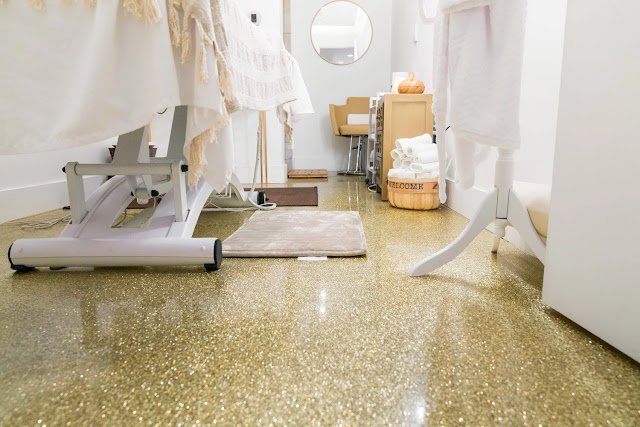A Comprehensive Guide To Acid-Stained Concrete Floors
Commercial areas must appear attractive as it tells a lot more about your business. But, constant foot traffic could cause several wears or damages. As a result, concrete floors might get dull, discoloured, lose their sheen, and even break with time.
Hence, the right installation of the flooring is crucial for the attractive appearance of the space. So, it makes more sense to renovate it using one of the most effective concrete floor finishes- Acid stain. This will improve the flooring's aesthetic value and functionality with its decorative stains.
Let's have a thorough discussion on acid-stained concrete floors!
A Complete Guide To Acid-Stained Concrete Flooring
First, you need to learn what acid-stain actually means in terms of flooring. This is one of the most effective concrete floor finishes that is a translucent and penetrating stain. It reacts chemically with the concrete’s hydrated lime. This in turn changes the color of the concrete and gently scrapes it.
For acid stains, the preparation of the concrete surface is essential to getting the best results. Afterward, there are several steps to acid stain the floor. Let's go over them in more depth!
Step 1: Surface Preparation and Cleaning
Using a concrete cleaner, clean the existing concrete surface and remove all types of dirt or mess. A cleaner for wiping off grease might not be able to remove paint splatters. Therefore you might need to use more than one. Use a grinder for tough stains like hardened tar or paint. Moreover, concrete prep products can be perfect for etching the concrete's smooth, machine-trowelled surface, allowing the stain to penetrate.
Step 2: Cover And Ventilate The Space
Open windows for airflow and cover nearby walls with plastic sheeting. Hold this sheet in place with painter's tape. Use fans for proper circulation of the air when applying acid stain indoors. Although the acid content of acid stains is very low, if some of the solutions splash on exposed skin, immediately rinse it off. Move the furniture away from any surrounding siding, lampposts, etc., and cover them with plastic sheeting. It is because porous furniture materials can absorb the stain the same ways as concrete does.
Step 3: Get The Surface Ready To Stain
Use a grinder with an abrasive silicon carbide disc to even up the concrete surface. Remove the rough patches before staining. Hardened tar and paint can be removed with the help of a grinder. If the current concrete surface is glossy and smooth, use an etching solution.
Step 4: Prepare The Acid Stain
Put on long sleeves, safety glasses, long pants, and gloves that can withstand chemicals. Based on the manufacturer's instructions, dilute the acid stain with water in a pump sprayer. Now, evenly spray the concrete from one border of the slab and then move to the other. You can combine the acid stain in a smaller plastic bucket and use a standard paintbrush to apply it to concrete counter tops.
Step 5: Make The Concrete Wet
In certain circumstances, wetting the concrete will help the stain absorb more evenly. But be sure to read the manufacturer's instructions first to learn how to do it properly. Usually, dampening the concrete only requires spraying it with a fine mist from a hose nozzle. Avoid getting it soaked to the point of puddles.
By soaking some of the concrete and leaving other areas dry, wetting can also help with an aesthetic finish. This as a result will give a marble-like appearance because the dry areas will absorb more stain.
Step 6: Apply Acid Stain To The Concrete
Use a natural bristle push broom to gently rub the solution into the surface of the concrete. Make sure you do it when the solution is still wet. Just apply the solution in a back-and-forth motion to get a uniform appearance. But if you like a more mottled appearance, you can skip this step. Leave the acid stain for 24 hours to penetrate the concrete and fully expand its color.
Step 7: Apply A Penetrating Concrete Sealer
Apply a penetrating concrete sealant to the acid-stained concrete once it has been thoroughly cleaned and dried as this will prevent future stains. When buying sealer, carefully study labels to make sure you receive the right product. For example, an interior concrete sealer is not appropriate for outside use.
Step- 8: Clean The Surface
Your floor is ready to use as soon as the sealer cures, which could take up to 48 hours. Just clean the surface and enjoy!
Basic Maintenance Tips For Acid-Stained Concrete Floors
Concrete that has been acid-stained is long-lasting and requires little maintenance. You simply need to stick to a few basic guidelines:
To prevent dirt buildup, dust mop or sweep once a week.
To get rid of water stains, scuffs, and smearing, damp mop once a month.
Recoat with a new floor finish once or twice a year, depending on the sealer used for your project.
Before leaving stationery goods or things on your floor for an extended period of time, use caution and safety measures.
Wrapping Up
Now you know how concrete floors are acid-stained and it is time to enhance the flooring of your space. With its aesthetic beauty and versatility, you can improve the functionality of your place. Indeed, it is a great investment as such concrete floor finishes have high durability and thus, last for years.




Comments
Post a Comment